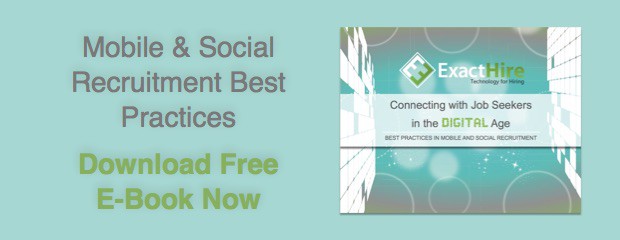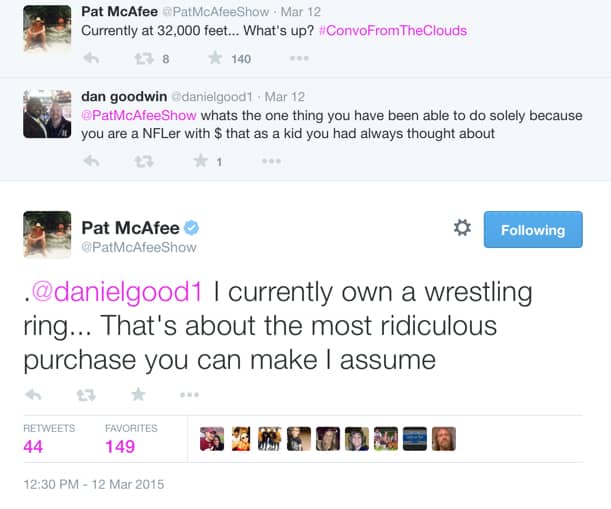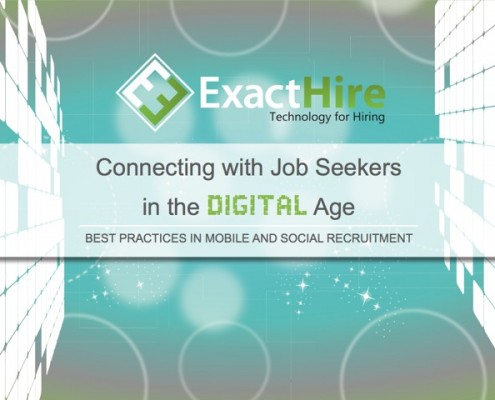Social Media and Employer Brand Awareness
“Don’t use social media to impress people. Use it to impact people.”
This quote by Dave Willis, an author, accentuates the power of social media in today’s society. Companies are vying for customers to buy their products and services along with competing fervently for key talent. To establish a competitive edge in recruitment and sales, companies seek to reach a global audience through their use of social platforms. With the use of social media, individuals are connected to each other through networks, connections, followers, and friends no matter their physical location. How can a company use social media to attract key talent?
How can an organization’s message sift through the noise to resonate with its target audience? Careful and genuine communication forges the way. An employer must communicate its culture and commitment to prospective employees and customers through authentic demonstration of its employer brand. The employer brand is an indicative view of what an organization’s workplace culture is. What it believes in and support. The motivation driving employees’ willingness to work and their productivity.
Social Media Reach
Social media is a consistent tool for communication and promotion. No matter the platform, whether it be LinkedIn, Facebook, Instagram, etc. an organization must use these tools to reach their desired audience. According to an end-of-2022 study conducted by Hootsuite, a leading marketing company, there are 4.74 billion social media users…4.74 billion people across the globe with differing socioeconomic characteristics and demographics who are searching for some type of product or place to work that makes their lives better. With an audience this large, the options for staffing and selling are endless. Provided your organization can craft a message that is effectively delivered to the portion of the 4.74 billion audience that is your target audience.
Before delving into communicating employer branding via social media, here are some statistics to reiterate the potential audience volume. YouTube is still the landmark platform for viewing video content. Hootsuite reported that YouTube’s social media audience of 2.51 billion people spend approximately 23.4 hours a month watching videos. TikTok is catching up quickly with users spending approximately 22.9 hours per month on the site. The average social media user spends nearly 2.5 hours daily scrolling through content. That is a lot of time searching and scrolling.
How to Utilize Social Media
Businesses need to examine their current marketing campaigns and see how social media is currently woven into existing campaigns. If an organization’s social media use is inconsistent or non-existent, it is time to revamp promotion initiatives. After identifying the staff member(s) who will be responsible for social media promotions and analyzing available funding, identify social platforms that are the most applicable for organizational activities. Use the business version of social media platforms. Business versions often have enhanced analytics for the company’s marketing team to analyze traffic and creative initiatives. Look at the organization’s marketing budget, specifically for social media outlets. Set spending limits as designated marketers learn what type of ads are most effective. Also to which audiences company reach outs are yielding the best ROI.
Make sure that the “About Us” area in each social media platform has contact information, company website and related links for convenience to the viewer. Include links to social media channels in any visible opportunity such as company website headers and footers, email signature lines, newsletters, intranet, applicant tracking system and even onboarding software (you want your new employees to follow, right?). Wherever possible, have a blatantly visible “Follow us on…” with all the organization’s social media outlets listed for quick subscription. According to LinkedIn, 49% of professionals follow companies on social media solely for awareness of open jobs so make sure social media is robust and offers different opportunities for viewers to engage and connect.
What Should I Post?
Design a message that authentically communicates the organization’s culture. Seek employees’ testimonials, and communicate them in video format. Get the popcorn…ok, maybe not, but individuals are increasingly captivated by quick movies on social media. Driven by TikTok, short-term reels are taking over social media because of its engaging, attention-getting info in quick snippets. Incorporate short videos for the viewer to listen to the genuine reasons why working at the company is exhilarating. Display what the culture is like each day, not just when there are celebrations for milestones achieved.
Highlight departments and employees, both remote and onsite, in a spotlight series. Have new employees share why they chose the organization; for established employees, have them share why they stayed with the company for the multitude of years. Promote the organization’s benefits and commitment to work-life balance. Post a Q/A session with senior leadership to discuss trends and positive changes in the organization. Showcase specific internal and community partnership initiatives. Use hashtags to correlate to positive events, but create a unique hashtag that is a consistent way to reach a diverse audience and attract awareness of organizational culture. Ask clients/customers to share their perspectives about the business. Include quotes and comments supporting activism and inclusion initiatives. Communicating what is real is the key.
How to Revamp Your Social Media
For those companies who have social media pages in existence but very limited content posted, it is time to revive those platforms and bring them back to life. Companies who are utilizing social media to communicate employer brand content need to have a content calendar. This helps manage posts and effectiveness. It is a fine line between under-communicating and oversharing so ideally, one post a day can be effective. Be ready to address complaints. The more visible and active an organization’s social channels are, the more likely customers will complain on those pages.
Offer to assist unhappy customers via private messages to keep negative discord to a minimum. When posting jobs on social media, consider the demographics of each platform’s users. Older employees with a longer work history will be more likely to search for jobs on LinkedIn as compared to Snapchat. Facebook is the favorite social platform of the 35 – 44 old demographic while Instagram is the top choice for Millenials and Gen Z users.
Companies need to examine their social media campaigns. It is not just a tool to attract new talent, but it is also a means to keep current talent engaged. Encourage existing employees to follow and contribute. Entice followers to be active participants in discussion threads to posted questions. The more activity, the more publicity. Post and promote job listings within social channels to reach existing followers, and encourage followers to share posts to expand the target audience.
Conclusion
No matter the platform, authenticity generates trust and commitment between followers and a company. As with any relationship, communication between an organization and its followers takes time, effort and nurturing. The impact is made when a company demonstrates the motivation for its existence and how camaraderie drives its culture of inclusivity and productivity. The need to impress disintegrates because the company’s bona fide enthusiasm for its culture communicated through social media resonates distinctly to viewers and overcomes any distractions and noise from its competitors.





